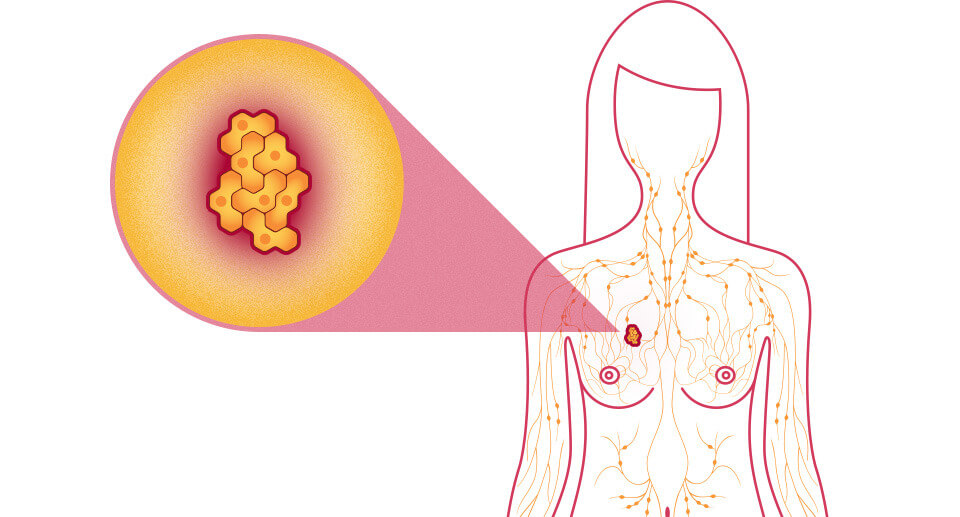Breast Cancer
Breast cancer is cancer that develops in the cells of the breasts. After skin cancer, breast cancer is a common cancer diagnosis in women in India. Breast Cancer is the most popular form of cancer among Indian women. Three-fourths of the cases of breast cancer happen in women ages 35 and 55 years.if you suffering from breast problem get the best breast cancer treatment in Aurangabad
Breast cancer survival rates have raised, and the number of deaths compared with this disease is regularly decreasing, largely due to factors such as earlier detection, a unique personalized approach to therapy, and a more satisfying understanding of the disease.

Breast Cancer Stages
Breast cancer can be divided into stages based on how large the tumor or tumors are and how much it has developed. Cancers that are large and/or have attacked nearby tissues or organs are at a higher stage than cancers that are small and/or still contained in the breast. To stage breast cancer doctor need to know:
- if the cancer is invasive or noninvasive
- how large the tumor is
- whether the lymph nodes are involved
- if cancer has developed to nearby tissue or organs
Breast cancer has five main stages: stages 0 to 5.
Stage 0 breast cancer: Stage 0 is DCIS. Cancer cells in Ductal carcinoma in situ (DCIS) remain confined to the ducts in the breast and have not spread into nearby tissue.
Stage 1 breast cancer
Stage 1A: The primary tumor is 2 centimeters wide or less and the lymph nodes are not affected.
Stage 1B: Cancer is found in nearby lymph nodes, and either there is no tumor in the breast, or the tumor is smaller than 2 cm.
Stage 2 breast cancer
Stage 2A: The tumor is smaller than 2 cm and has spread to 1–3 nearby lymph nodes, or it’s between 2 and 5 cm and hasn’t spread to any lymph nodes.
Stage 2B: The tumor is between 2 and 5 cm and has spread to 1–3 axillary (armpit) lymph nodes, or it’s larger than 5 cm and hasn’t spread to any lymph nodes.
Stage 3 breast cancer
Stage 3A: Cancer has developed to 4–9 axillary lymph nodes or has enlarged the internal mammary lymph nodes, and the primary tumor can be any size. Tumors are greater than 5 cm and cancer has spread to 1–3 axillary lymph nodes or any breastbone nodes.
Stage 3B: A tumor has invaded the chest wall or skin and may or may not have invaded up to 9 lymph nodes.
Stage 3C: Cancer is detected in 10 or more axillary lymph nodes, lymph nodes near the collarbone, or internal mammary nodes.
Stage 4 breast cancer
Stage 4 breast cancer can have a tumor of any size, and its cancer cells have grown to nearby and distant lymph nodes as well as distant organs.
Symptoms
Signs and symptoms of Breast Cancer:
- A breast lump or thickening that seems different from the surrounding tissue
- Revolution in the shape, size of a breast
- Modifications to the skin over the breast, such as dimpling
- A newly altered nipple
- Peeling, crusting or flaking of the pigmented area of skin surrounding the nipple or breast skin
- Redness of the skin over your breast, like the skin of an orange

Types of Breast Cancer
There are numerous types of breast cancer, and they are divided into two main categories.
- Invasive – Invasive cancer has developed from the breast ducts or glands to other parts of the breast
- Noninvasive – Noninvasive cancer has not spread from the original tissue.
These two categories are used to represent the most common types of breast cancer, which include:
- Ductal carcinoma in situ
- Lobular carcinoma in situ
- Invasive ductal carcinoma
- Invasive lobular carcinoma
Other, less common types of breast cancer include:
- Paget disease of the nipple
- Phyllodes tumor
- Angiosarcoma